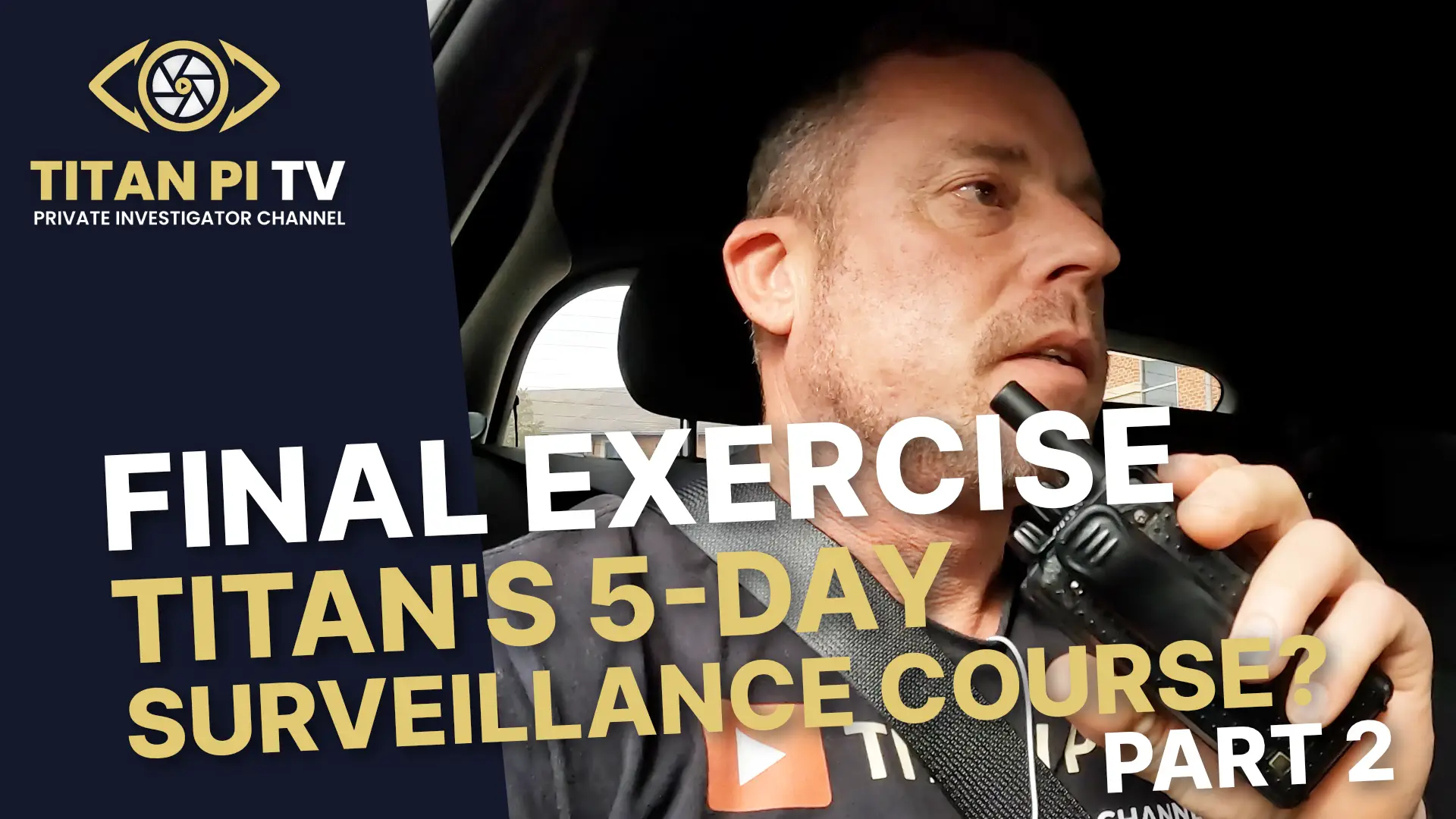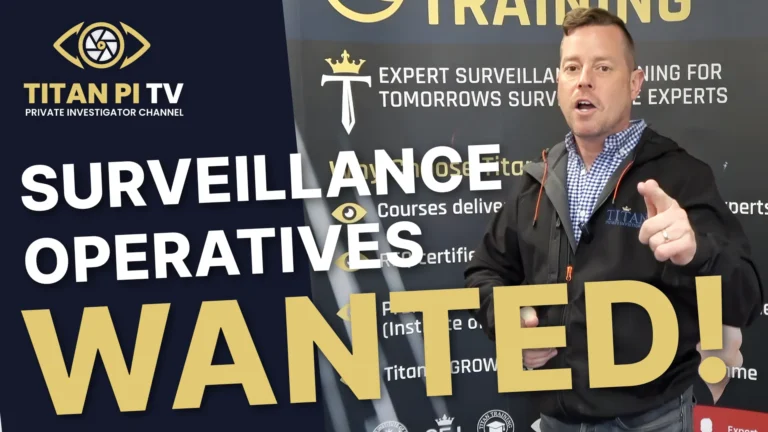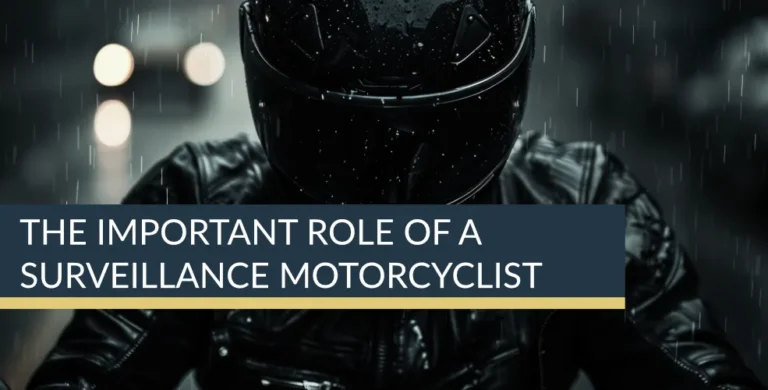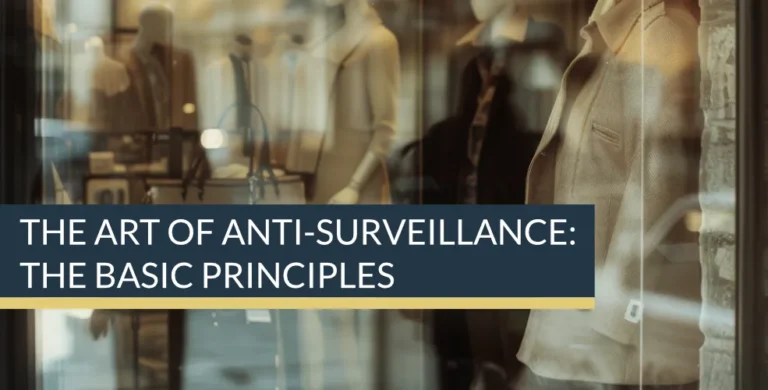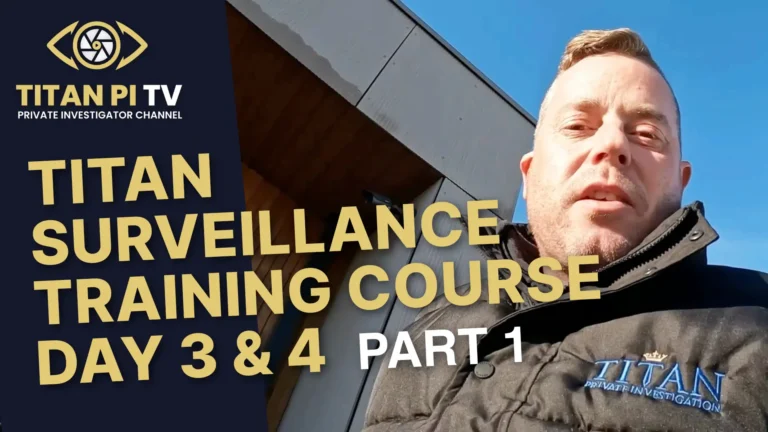Final Exercise – Titan’s 5-Day Surveillance Course Part 2
Real-World Surveillance Tradecraft Put to the Test
In the latest episode of Titan PI TV, host Simon Henson takes viewers into the heart of the final exercise on Titan’s renowned Five-Day Surveillance Course. Building on the momentum from Part 1, this installment follows an all-male trainee team through a live, dynamic urban operation designed to replicate real-world surveillance challenges as closely as possible, from multi-exit retail environments to covert meetings, public transport transitions, and high-stakes decision-making on the fly.
This is the culmination of a rigorous training week. The remit is simple but unforgiving: treat the exercise like a genuine operation. The result, as Simon notes, is a team that “stepped up a gear” and performed “as real as you can get”.
Multi-Exit Retail Tactics: Primark and the Art of Coverage
The exercise picks up in a bustling city centre, with the subject entering a Primark — not a department store in the classic sense, but a two-level premises with a mezzanine that poses its own challenges. For surveillance professionals, stores with multiple entrances and exits present significant risk. The subject can vanish in seconds if the team fails to pre-empt exfil routes.
Here, the subject enters at one door and exits at a more distant one. The training purpose is crystal clear: test whether operatives who “put one in” on entry are proactively researching and covering further exits. The brief makes it explicit — they may not know this store; their success depends on planning in real time, using the environment intelligently, coordinating near-side and off-side cover, and establishing a sterile perimeter around the subject’s likely movements.
The team deploys visual cover with “near side and offside covered,” creating a buffer that protects the integrity of the follow. A foot operative (“VINO”) goes on visual, offering the rest of the team early warning on direction and pace. The point is not simply to observe; it’s to shape the ground — pre-empt choke points, anticipate where the subject can bolt, and be in position before he moves. The calm, procedural comms indicate a team in control: heads-up alerts from the entry operative, updates on exit direction, and rehearsed handovers keyed to near-side/off-side orientation.
Testing Composure: A Deliberate Detour to Anne Summers
In a subtle but purposeful twist, the subject enters Anne Summers — a deliberate choice by the instructors to probe the team’s composure and adaptability. It is not a common venue for surveillance exercises and, as Simon explains, can make some operatives “clam up,” particularly in an all-male team.
The lesson is not about the shop. It’s about behaviour. Can trainees maintain cover, confidence, and presence when the environment tests their comfort zone? Can they blend, keep eyes on, and avoid drawing attention? Surveillance hinges on normality; if you look like you shouldn’t be there, you probably shouldn’t be there. The team’s positioning — maintaining near and offside, creating a sterile environment — continues to serve them well, reinforcing the core principle: stay relaxed, stay invisible, and keep the subject contained.
Loss Procedure in Action: From Brief Loss to Rapid Recovery
Even well-managed operations experience friction. The subject ducks into a quiet arcade with three exits — not an ideal place to sit a team — before moving into Loake Shoemakers and exiting via a further door. There’s a brief loss. It’s the moment that separates the competent from the unprepared.
Titan teaches a disciplined loss procedure built around the mnemonic “HELP” — Honest, Early call, Location, Procedure. The principles are as follows:
- Honest: Declare the loss without delay — no bluster, no ego.
- Early call: Don’t wait. The sooner the team responds, the better the recovery odds.
- Location: Anchor the last known position with clarity.
- Procedure: Execute the playbook immediately — redeploy, lock down exits, sweep likely vectors, and re-establish contact.
As Simon reports, the team puts the procedure in, and “it works every time.” The loss is recovered quickly, and the subject is back under control, heading generally towards the tram. For trainees, this is gold dust: it’s not about never losing; it’s about never staying lost.
Multi-Modal Transitions: Public Transport, Phoenix Park, and Shadow Vehicles
With the subject transitioning via public transport, the complexity increases. The team adapt — foot units track to Phoenix Park while four vehicles shadow discreetly, ready to collect and reposition assets. A vehicle tracker remains deployed, giving a safety net without undermining the discipline of visual surveillance. The message is clear: technology supplements tradecraft, it doesn’t replace it.
This phase tests synchronisation between static, foot, and mobile operatives. The team must time the uplift of foot units, maintain visual custody of the subject, and retain the flexibility to react if the subject changes transport mode or accelerates away. The calm tempo of comms suggests confidence and control: the trainees know where everyone is, who’s covering what, and how the subject fits into the wider picture.
The Hotel Meet: Reception, Lobby, and Covert Imagery
The subject pulls into the Nottingham Belfry Delta Marriott Hotel — a classic rendezvous setting. The intelligence objective for the team is explicit: gain imagery of any associates, identify unknowns, and capture the handover if one occurs. Hotels present twin challenges: they’re surveillance-friendly in terms of footfall and cover positions (bars, lobbies, lounges), but they’re equally fraught with visibility risk if operatives bunch or look out of place.
The team deploys foot units into the reception/lobby. The difficulty? They have to be in position before the subject arrives, which means they don’t yet know who he’ll meet. It’s a realistic constraint: timing sometimes forces you to commit to a location before you have faces.
The meet materialises. The subject links up with an unknown male. An envelope appears on the table. This is the moment. The team’s priorities are threefold:
- Covert imagery of the handover: the envelope moving from associate to subject.
- Capture of the associate’s identity: face, distinguishing features, clothing, gait, any tech, and possibly vehicle later.
- Audio proximity: any audible snippets could be “vital intelligence” — names, times, locations, amounts, or coded references.
The trainees partially achieve the objective. They pick up that the subject exits with an envelope but miss the actual handover — a valuable lesson. In covert work, the difference between “seen with” and “seen receiving” can be critical evidence. It’s a minor miss in an otherwise well-managed sequence, and exactly the sort of fine margin a final exercise is designed to expose.
Decision Point: Follow the Subject or Switch to the Associate?
With the meet complete, a strategic question arises: stick with the primary subject or switch to the unknown male to secure his identity and vehicle? There isn’t a universal right answer; it depends on original tasking, risk appetite, and asset availability. In a full operational context, a split would be ideal — one element maintains contact with the subject while another shadows the associate to a vehicle uplift, ideally capturing plates and onward movements. The episode leaves the decision open in the moment — a fair reflection of the dynamic judgment calls that define professional surveillance.
Motorway Movements: Committed to the M1 Southbound
The subject commits to the M1 southbound. The team handles motorway comms with concise, professional brevity — lane positions, markers, and nearby reference points (“past the Mercedes dealership near side”). The instruction style is clipped and decisive, balancing safety with situational awareness. It’s not glamorous, but it’s the backbone of mobile surveillance: measured updates, zero waffle, and clean handovers.
Stand Down and Structured Debrief: What Good Looks Like
The operation concludes with a stand down and a rendezvous back at Titan’s training office. A disciplined acknowledgement sequence follows — A1 through A4 confirm — with a dash of honest pressure from the directing staff to maintain communication tempo. It’s a realistic nod: in the field, missed comms can cost you the job.
Then comes a rare training feature: a debrief with the subject. In the real world, subjects don’t sit down and tell you how well you blended in. Here, instructors use the opportunity to extract maximum learning:
- The subject provides feedback on moments the team stood out or excelled.
- Operatives account for their decisions and outcomes — with honesty.
- The envelope handover gap is scrutinised.
- Loss procedure is affirmed as effective under stress.
The tone is professional and constructive: own what happened, learn, and improve. As Simon puts it, “we need to get the most out of it,” and that demands candour from all sides.
Outcomes: Pass Rates, Qualifications, and the Path Forward
Results matter. Of the 12 learners, 10 reached the required standard and passed. Four of those completed the RQF Level 4 qualification pathway — a rigorous benchmark of competence. Graduates now have 28 days to complete their workbook, consolidating the practical learning with reflective evidence and structured assessment.
It’s been, by Simon’s admission, a hard week. “My eye bags have got bigger and I feel I’ve aged a couple of years,” he jokes — the kind of fatigue and fulfilment trainers and students alike will recognise. The throughline, though, is enthusiasm: the instructors “thoroughly enjoy it,” and the learners do too. The atmosphere is one of pride, graft, and professional growth.
Professional Takeaways: Tradecraft Lessons from the Final Exercise
- Pre-emptive Exit Strategy: Multi-exit environments demand immediate mapping and coverage. Don’t treat a mezzanine like a separate floor; understand the flow and stay ahead of the subject.
- Confidence Under Cover: Environment-led discomfort (e.g., in Anne Summers) is a test of professionalism. Blend, behave normally, and keep the visual.
- Loss Procedure Saves Operations: The “HELP” mnemonic — Honest, Early call, Location, Procedure — works because it’s simple and immediate. Practised drills beat panic.
- Covert Imagery Is Evidence: An envelope in-hand is useful; the handover is critical. Positioning, angles, and timing are everything.
- Audio Intelligence Matters: Close enough for clean audio without compromising cover can turn observations into actionable intelligence.
- Multi-Modal Coordination: Tracker tech is a safety net, not a crutch. Visuals and smart handovers keep you in control when the subject transitions.
- Decision-Making Under Uncertainty: Whether to switch to an associate or remain with the primary is a mission-led choice. Train both routes.
- Debrief with Discipline: Honest, structured debriefs are where skills set. Celebrate what worked; confront what didn’t.
Interested in Becoming a Surveillance Professional?
Titan’s Five Day Surveillance Course is designed to build operational confidence and competence through immersive, live, scenario-based training delivered by experienced practitioners. If you’re considering a career in investigations or CP surveillance — or you’re a serving professional looking to sharpen your edge — this programme offers a clear pathway to industry-recognised skills and qualifications.
Full details, dates, and booking are available on Titan’s website. Head to www.titaninvestigations.co.uk, click the Training tab, and select “Basic 5 Day Surveillance Course.”
As Simon signs off: it’s demanding, it’s disciplined, and it’s tremendous fun. “We love it — you’ll love it.”
Don’t Miss Future Episodes
If you enjoyed this inside look at the final exercise, give the video a thumbs up — it helps others discover the channel. To keep up with future episodes of Titan PI TV with Simon Henson, hit subscribe. It’s free, and ensures you won’t miss more real-world insights into private investigation, surveillance tradecraft, and professional training.
What’s Next on Titan PI TV?
Titan PI TV continues to grow steadily, with over 2,917 subscribers and counting—a testament to the appetite for straight-talking guidance in a complex field. If you found Henson’s insights useful, subscribe to the channel to catch future episodes. New content drops every Friday at 3:00 pm, offering grounded advice for investigators, agency owners, and professionals who work with them.
Thank you for reading, watching, or listening to this week’s blog post on Titan PI TV. For more expert advice and behind-the-scenes insights, subscribe to Titan PI TV on YouTube or download the Titan PI TV podcast wherever you get your podcasts. If you found this information helpful, please give us a thumbs up and subscribe to our channel. Stay tuned for more insights into the world of private investigations. Until next time, stay safe and keep learning!
Titan PI TV: Uncovering the Truth, One Investigation at a Time.

